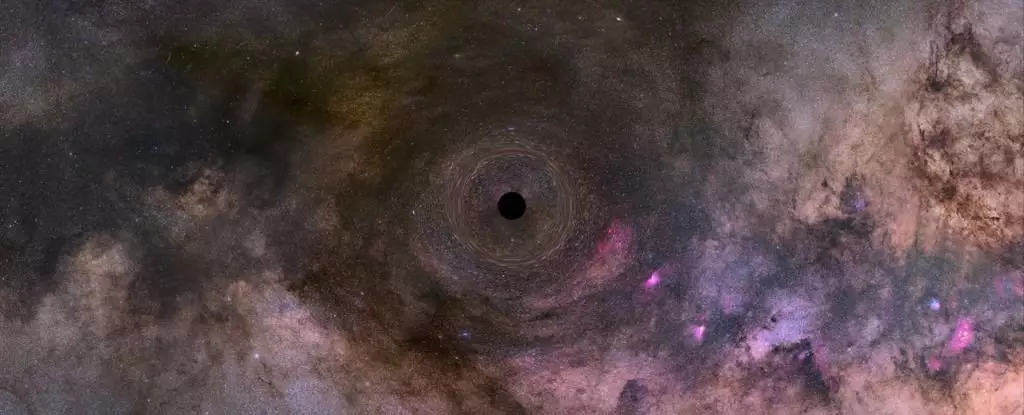The universe, vast and enigmatic, continually surprises us with its wonders. One of the most profound recent revelations is the discovery of a solitary black hole, an event that reshapes our understanding of these mysterious cosmic phenomena. Traditionally, black holes are often found paired or in clusters, their presence detected through the interaction with nearby stars or the gravitational waves they produce when merging with other black holes. This solitary black hole, however, defies those norms, offering astronomers a unique opportunity to study an object so often overlooked.
The Characteristics of the Rogue Object
Confirmed to possess a mass around 7.15 times greater than our Sun, this black hole resides nearly 4,958 light-years from our planet. It moves through the cosmos at an astonishing speed of approximately 51 kilometers per second. What sets this black hole apart is not just its solitude, but the methods through which it has been observed and identified. Gravitational microlensing, a phenomenon where the intense gravitational field of the black hole bends and amplifies light from a more distant star, allowed researchers to confirm its existence without needing a stellar companion. This phenomenon essentially presents a unique glimpse into the nature of black holes, illuminating the incredible methods employed by astronomers to uncover the secrets of the cosmos.
The Journey to Identification
The road to identifying this solitary black hole wasn’t an easy one. Initial detections date back to 2011 via two significant observational surveys: the Optical Gravitational Lensing Experiment (OGLE) and Microlensing Observations in Astrophysics (MOA). These surveys aimed to find instances of gravitational lensing that could indicate the presence of a black hole. Later, the Hubble Space Telescope was brought into play, conducting a series of observations over several years to track the warping of starlight caused by the black hole’s gravity. This meticulous collection of data involved numerous telescopes and instruments, all contributing to building an accurate profile of the black hole.
Despite the extensive research, the narrative took a twist in 2022 when a competing analysis suggested alternative interpretations based on Hubble data that led some thinkers to believe that the mystery object might in fact be a neutron star— a considerably lighter astrophysical body. However, subsequent investigations strengthened the black hole claim, showing just how dynamic and uncertain the field of astrophysics can be.
A New Era of Gravitational Research
What makes this scenario even more fascinating is the implication of such findings on our understanding of the universe. Traditionally, black holes have been thought to require partners to reveal their secrets, making this solitary black hole akin to a lone wolf in the cosmos. Its gravitational influence has provided a fresh lens through which we can view the formation and behavior of these enigmatic entities. The revelatory confirmation has steered discussions toward the possibility that many solitary black holes exist, hidden and unnoticed, vying for recognition.
This black hole’s identification also emphasizes the advancements in observational technology and techniques, showcasing the collaborative efforts of various scientific teams. The complexities involved in accurately diagnosing its effects illustrate the dynamic nature of light as it travels through an ever-changing cosmic landscape.
Moreover, researchers went to great lengths to ensure that their findings were as accurate as possible, meticulously accounting for various forms of ambient light and background interference. This meticulousness showcases the precision required in modern astronomical studies, blending physics, technology, and sheer human diligence in a powerful imperative to unveil the cosmos.
Implications for Future Research
The confirmation of this solitary black hole opens up new avenues for exploration and understanding of cosmic phenomena. It serves as a reminder that the universe is brimming with mysteries yet to be uncovered. The possibility that there are numerous rogue black holes out in interstellar space only adds to the excitement. As methods of detection evolve, we may come to realize that our understanding of black holes, their formation, and their isolation may be far from complete.
Such insights are pivotal in addressing the questions we have long harbored about the origins of these monstrous entities and their influence on the galaxies they inhabit. Continuous study and observation will likely reveal more about the dynamics of black holes, challenging preconceived notions and inviting a deeper inquiry into the labyrinth of the cosmos. Each new discovery is not just an addition to scientific knowledge but a step closer to comprehending our own place in this expansive universe.


Leave a Reply